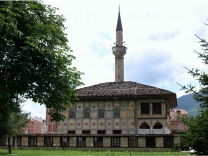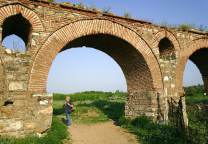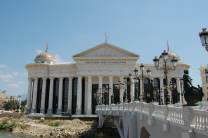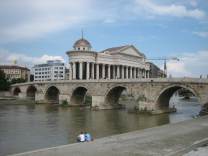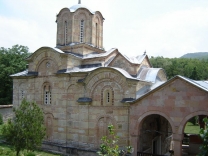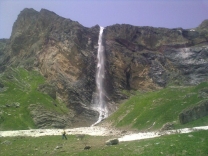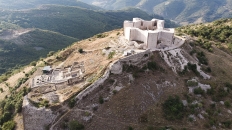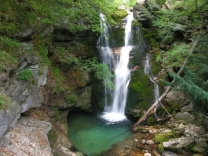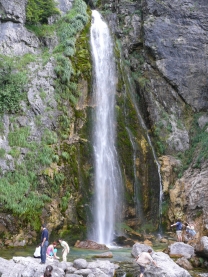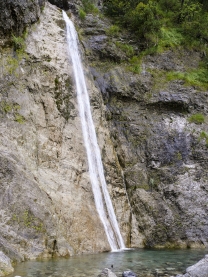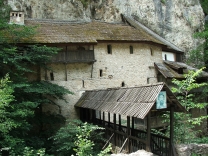
Prizren Fortress
Prizren Fortress (Albanian: Каlаја e Prizrenit; Serbian: Призренски град, Prizrenski grad) is a hilltop fortification in the city of the same name in Kosovo[a]. It overlooks the river which flows through Prizren, which developed around the fortress. The site of the fortress of Prizren has seen habitation and use since the Bronze Age (ca. 2000). In late antiquity it was part of the defensive fortification system in western Dardania and was reconstructed in the era of eastern Roman Emperor Justinian. Byzantine rule in the region ended definitively in 1219–20 as the Serbian Nemanjić dynasty controlled the fort until 1371. Since 1371, a series of regional feudal rulers came to control Prizren and its fort: the Balšić, the Dukagjini, the Hrebeljanović and finally the Branković, often with Ottoman support. The Ottoman Empire assumed direct control after 1450 and over time turned the fort into a central stronghold in the Eyalet of Rumelia. Much of the modern fortress dates to the 18th century reconstruction phase.
The fortress is situated on a dominant hill at the eastern part of the town of Prizren, set on a strategic position, contoured with lines that follow distinguished features of the terrain's natural morphology. Archaeological excavations were carried out in 1969 and then again in 2004 and 2009–2011. They resulted in the discovery of the infrastructure, which incorporates rampart walls enforced with towers, casemates, labyrinth corridors, depots, and other accompanying inner rooms and dwellings. It was declared a Monument of Culture of Exceptional Importance in 1948.
Name
The Prizren fortress is named Kalaja e Prizrenit in Albanian and Prizrenska Kaljaja in Serbian. Both names come from the Turkish word kale (fortress) by which it was known in Ottoman times. The historical neighbourhood which formed around the lower part of the fortress is named Nënkalaja (literally "below the fortress").
History
Left: Roman Emperor JustinianRight: Stefan Dušan, Serbian EmperorPrizren has been traditionally identified with Theranda, a town of the Roman...






